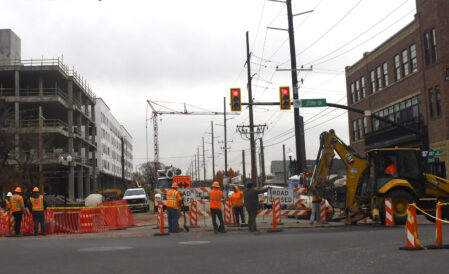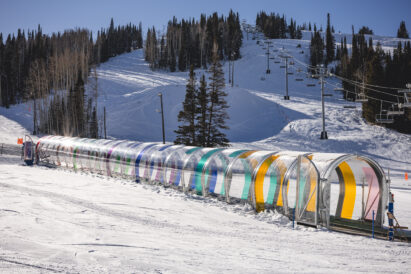Officials discuss difficulty of keeping roadways up, importance of master plans for infrastructure

Jared Lloyd, Standard-Examiner
Crews work on Lincoln Avenue in Ogden on Wednesday, Nov. 12, 2025.Editor’s note: This is the third in a series of three stories following a Standard-Examiner editorial board interview with Ogden City Director of Public Services Justin Anderson on a wide range of topics, including streetlights, politicization of infrastructure, sidewalks, street repair and more. Ogden Mayor Ben Nadolski also joined the interview.
OGDEN — Despite a 40-year-old science fiction franchise’s best efforts, its arguably most famous predictive catchphrase failed to capture the reality of our time.
Where we are, we need roads.
And not only do we need roads, Ogden City Director of Public Services Justin Anderson bluntly noted that there are some harsh realities in keeping them up throughout the city and beyond.
“Roads are not funded enough to keep them at a high level of services,” he said. You have to pick winners and losers on roadways. This is not an Ogden problem. This is not even a state of Utah problem. I see it nationally.”
He said that factors like inflation of material prices and labor shortages have led to the situation the city and beyond are in when it comes to roads — and there’s little relief on the horizon.
“You look at gas tax, and this is what we call our B and C funds — it comes from the gas tax,” he said. “It does not even touch what we need to do our roadways. That’s also how we fund our streets getting snow plowed, our salt is all through B and C funds. We fund personnel that way and we’re also supposed to fund all of our maintenance.”
Ogden Mayor Ben Nadolski said that, given its age and other factors, Ogden doesn’t quite benefit from state and federal gas tax funds — along with other special funding circumstances — the way other localities can.
“Those are kind of built around Utah as a whole and we’re so different than the rest of Utah that we are always going to be an outlier in those models and in that funding approach,” he said. “We’re talking about other cities that are building roads that are new as they grow out, and those are all collected in part through impact fees. When a developer comes in and has an impact, they get a fee to help provide for that infrastructure, which we don’t have that opportunity anymore. Our funding model gets turned upside down, almost automatically.”
Anderson said one way to bring down costs is to make sure major road and infrastructure projects aren’t all coming due at the same time.
“We’re trying to spread that out,” he said. “You’re never, ever going to be done, but the idea is to have it spread out so that we can always have a way of keeping up with it instead of having large chunks due at the same time. That becomes problematic.”
He said when he started working with the city 17 years ago, he helped push for the city to begin planning ahead on its infrastructure projects.
“I look back to when I started with the city,” he said. “Ogden City did not have a transportation master plan. It did not have a water utility master plan or storm sewer utility master plans. One of the things we started doing back then is starting to put these master plans together. … We had to have a plan, and in putting these together, we laid out a plan to the best knowledge that we could find and laid these out.”
Anderson said the plans are updated every 5-10 years.
He said that having these plans in place makes it easier to approach entities about outside funding and grants to help offset some of the city’s costs on projects as well as giving an idea of which infrastructure projects could be accomplished simultaneously with road work.
“By having these plans laid out, we can say, ‘Alright, here’s where our water system is aligned, here’s where our roadway is. Let’s pool these together while we’re here fixing this roadway. Let’s get it all fixed.'” he said.
Anderson said the city also works with third-party utility providers such as gas, internet and power to coordinate upgrades or needed fixes to their adjacent infrastructure as roadway projects are completed.
Nadolski said, ultimately, there’s one goal for these infrastructure projects.
“We’re doing infrastructure for people,” he said.



